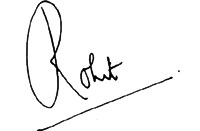 articles
---OMR SOLUTION USES articles
---OMR SOLUTION USES

OMR Solutions is one stop place for complete OMR
Solutions. This solution is provided by leaders and expertise of
this area.
FShort for *O*ptical *M*ark *R*ecognition,
the technology of electronically extracting intended data from marked
fields, such
as checkboxes and fill-infields, on printed forms. OMR technology
scans a printed form and reads predefined positions and
records where marks are made on the form.
This technology is useful for applications in which large numbers
of hand-filled forms need to be processed quickly and with
great accuracy, such as surveys, reply cards, questionnaires and
ballots. A common OMR application is the use of "bubble
sheets" for multiple-choice tests used by schools. The student
indicates the answer on the test by filling in the corresponding
bubble, and the form is fed through an optical mark reader (also
abbreviated as OMR, a device that scans the document and
reads the
data from the marked fields. The error rate for OMR technology is
less than 1%.
OMR technology has been widely used since the 1970s for a variety
of uses, including school and university tests, censuses, surveys
and lotteries, as well as for voting. It is also used in barcode
readers, which are in widespread use in retailing, stock taking,
libraries and schools..
Apart from voting systems, there
are other potential applications for OMR technology. In Australia,
for example, OMR systems
are used to scan electoral rolls marked in polling places to indicate
the names of electors who have voted.
This permits Australian electoral authorities to automate the enforcement
of Australia's compulsory voting system, as well as
identify any instances of multiple voting.
*USES OF OMR IN CENSUS*
(Excerpts from http://www.tanzania.go.tz/census/report8.htm)
After studies made in countries that had used the new technologies
for datacapture like Zambia (OMR) and South Africa (OCR)
it was decided that the OMR technology be adopted and first
tested during the pilot census; if successful, be used for the main
census.
The Pilot Census was successful (the scanning acceptance
rate was 98.29 percent) and the OMR technology was accepted.
This phase began as planned on 15th October 2002 and was completed
in 26 days; an average of one region a day. Final
checks were carried out to ensure that all EAs were scanned before
production of General Report tables.
The scanning acceptance rate was 99.91 percent. The preparation
of these General Report tables was completed by January
9th 2003, less than three months from the start of scanning and
less than four months after the Census Day.

|

